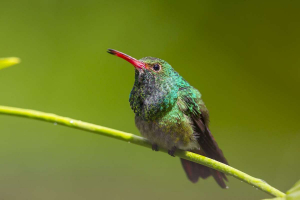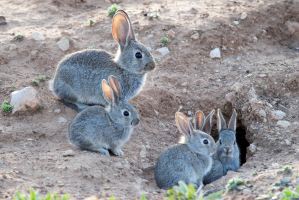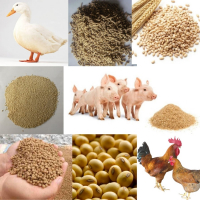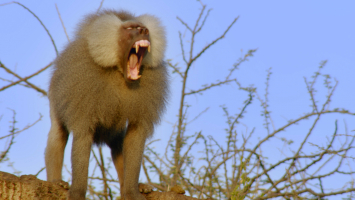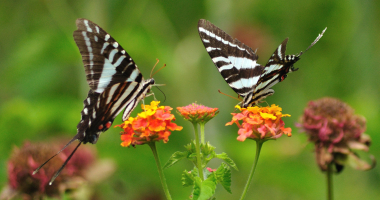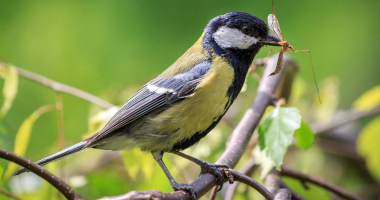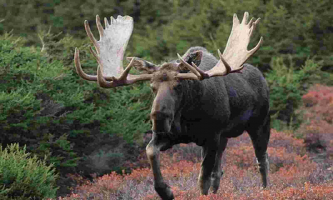Top 10 Extreme Forms of Animal Defense
Business in self-defense is booming. Numerous other fighting techniques, such as jiu-jitsu, krav maga, and boxing, are also teachable. You can also spend money ... read more...on tools like telescopic batons, tasers, and powerful weapons. You have countless options for self-defense. On the other hand, animals have much less available to them. Most prefer to hide or escape, and those that do fight usually just use their teeth and claws. But occasionally an animal develops an extremely creative means of defending itself.
-
Most people typically dislike bugs, and a key reason for that is that many of them bite or sting. However, a bug that shoots you with searing chemicals instead of more conventional means of attack is a distinct type of terrifying.
The fact that Bombardier beetles are barely a little over an inch long may be their one saving grace. A chemical reaction takes place in their abdomen when they feel threatened. Hydroquinone and hydrogen peroxide combine. The beetle has a tiny nozzle on its back that it can shoot at a predator with incredible accuracy. Furthermore, you don't want to be the target of that blast.
The combined effects of the two substances can irritate the respiratory system and eyes. Additionally irritating, the process produces heat, making it truly boiling hot at 100 degrees Celsius. There are enough chemicals in the insect to fire this 20 times.
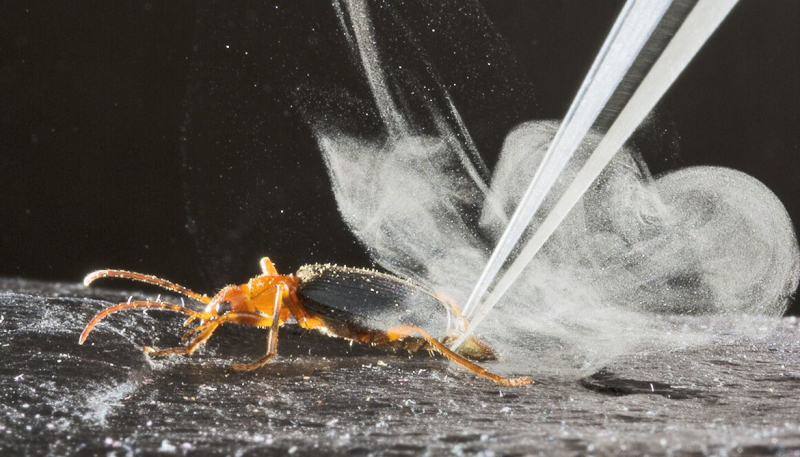
https://www.washingtonpost.com/ 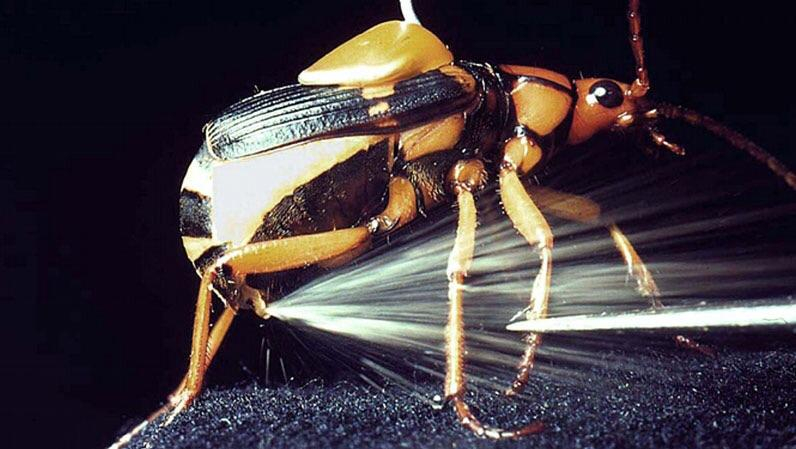
https://www.reddit.com -
The fecal shield is a structure made by the larvae of numerous species of Chrysomelidae leaf beetles. It is made of the insect's frass and frequently its exuviae, or fragments of lost exoskeleton. The shield can be carried by the beetle on its back or held in its hind end. The primary purpose of the fecal shield is protection against predators. Other names for the fecal shield that have been used in the literature include "larval garment," "kotanhang," or "faecal appendage," "faecal mask," "faecal pad," and "exuvio-faecal annex."
Due to their armor, turtles, armadillos, and shellfish enjoy a strong defensive edge. Other organisms must use their creativity because they don't have the same genetic advantages. Consider the tortoise beetle, which defends itself from predators by building a shield out of its own waste.
As a sort of protection before developing their own hard carapace, many other species of beetle perform the same thing as larvae. The tactic is eerily clever because it makes advantage of a resource that the beetle never runs out of and that very few predators want to approach. The tortoise beetle may even shift its shield and use it as a weapon to combat potential predators.
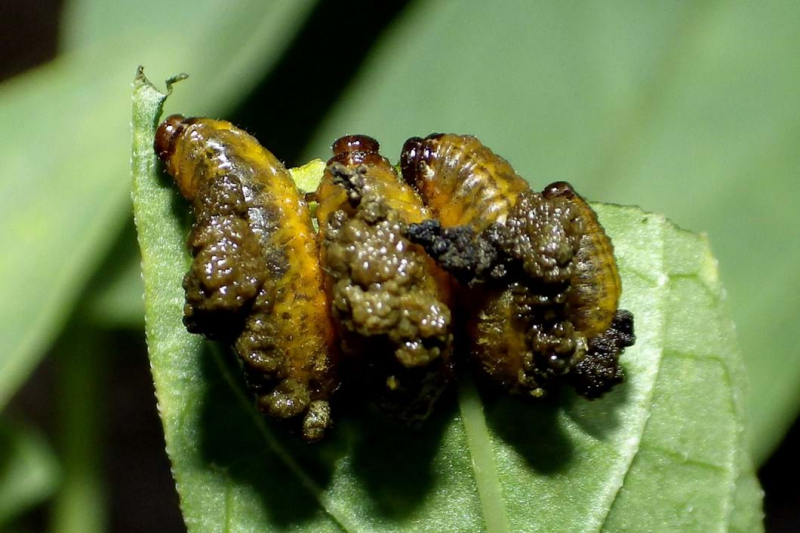
https://www.earthtouchnews.com 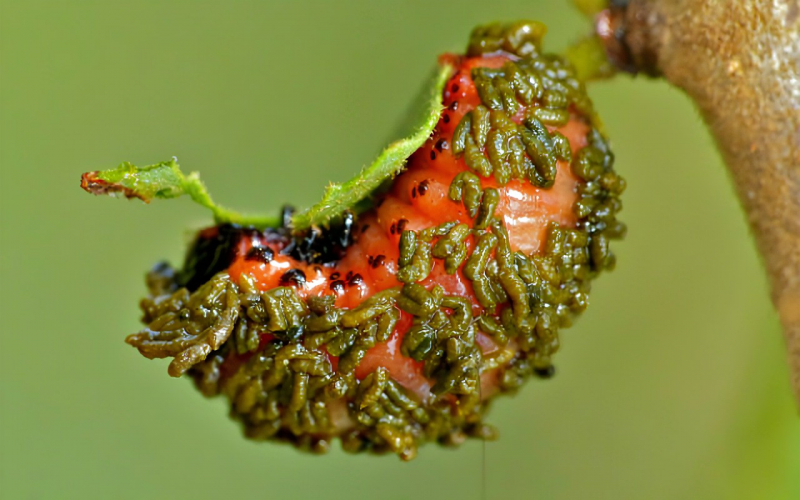
http://ipfactly.com/ -
A good number of birds have a variety of protective abilities, the most important of which is the capacity to simply fly away. Additionally, some birds have dangerously strong beaks and talons. But what about the more sensitive, smaller ones? What transpires if they are in danger?
The Eurasian Hoopoe weighs about as much as a deck of cards and can grow to be about a foot long. These are not dreadful monsters. Therefore, in order to avoid being eaten, they will poop all over their own nests and cover their own eggs with secretions that smell foul.
The substance, which comes from a gland below the tail, is used by females to cover themselves. Despite the fragrance, it is antibacterial and increases the flexibility and waterproofness of her feathers. Within six days of hatching, young animals can defend themselves by launching projectile feces at predators.
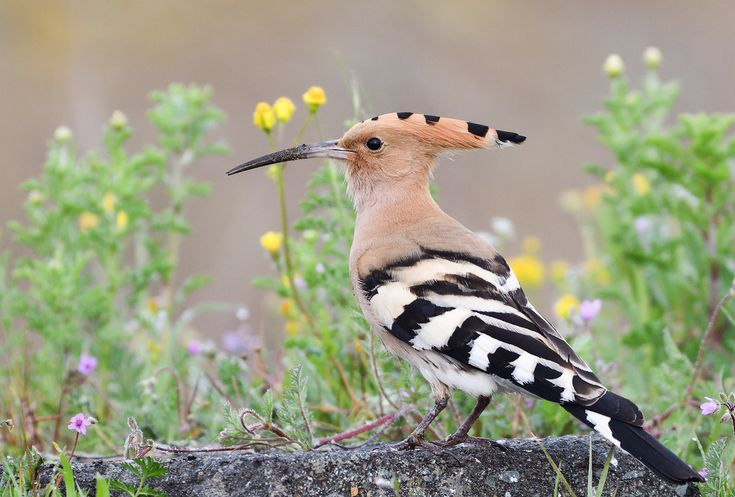
https://www.pinterest.com/ 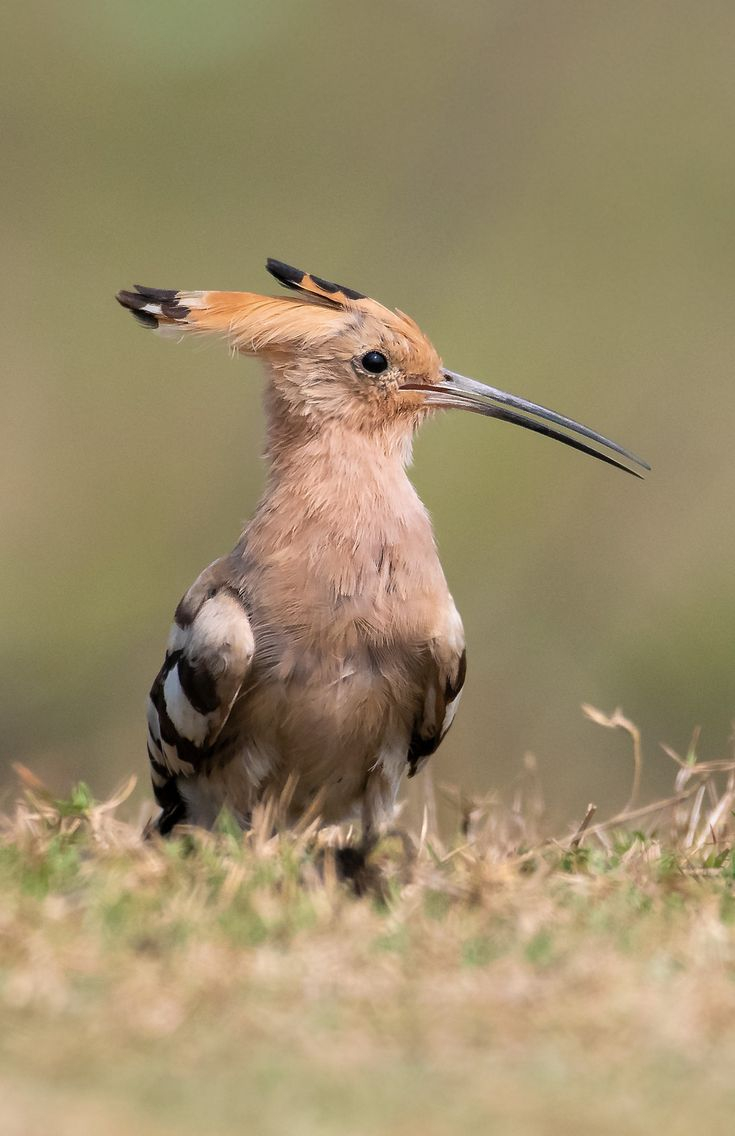
https://www.pinterest.com.au -
There are many unusual, frightening creatures in the ocean that are more than capable of protecting themselves in various ways. You don't want to get into contact with too many creatures of the deep blue water, from the jaws of a shark to the claws of a crab. Some of the most powerful organisms rely on a variety of deadly and incapacitating toxins that can quickly and effectively stop a predator, including a human.
A backdoor to its compromised defenses has been created by the blanket octopus. A blanket octopus doesn't produce powerful venom, unlike the dangerous blue-ringed octopus. Instead, they will take the Portuguese man of war's weaponry.
The man of war has venomous, stinging tentacles and is sometimes misidentified as a jellyfish even though it is actually a siphonophore. Although they rarely kill people, they can nevertheless result in blisters and welts and are potent enough to kill small fish. But blanket octopuses are resistant. They will immediately rip the tentacles off the man of war and use them as poisonous whips to either attack or defend themselves.
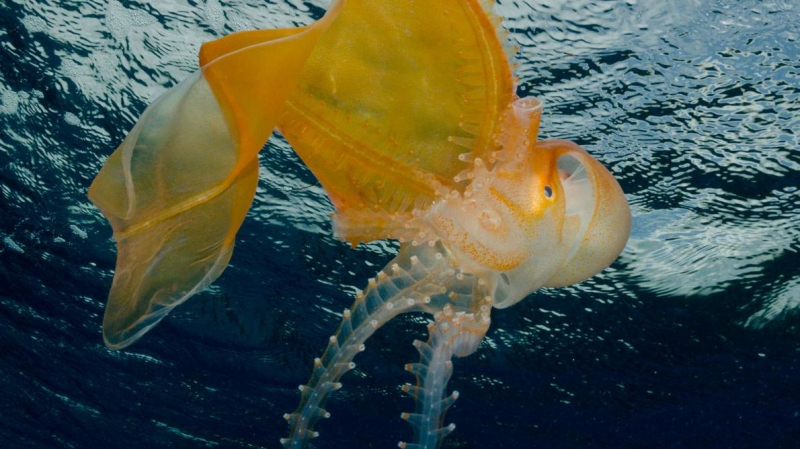
https://scienceshil.blogspot.com 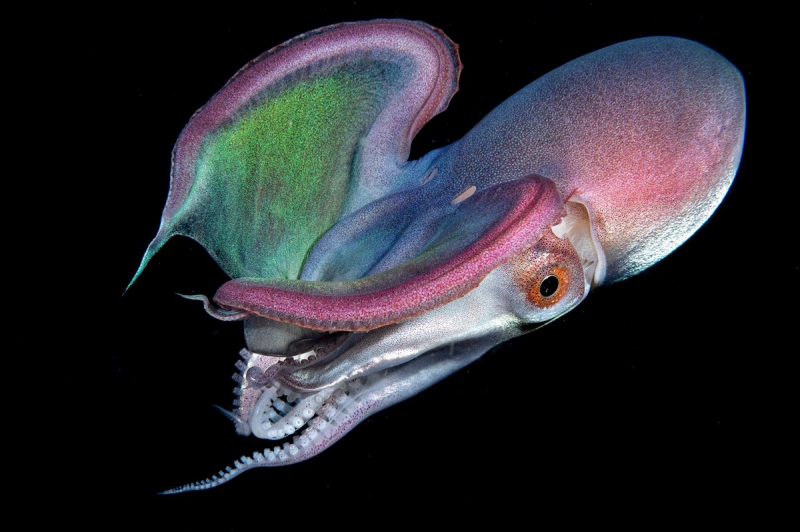
https://www.nationalgeographic.com.es/ -
Salamandridae members all have poisonous skin or glands that emit poison when threatened, and they are all toxic. The most toxic skin secretions are typically found on terrestrial animals like Taricha and the efts of some aquatic species. The Spanish ribbed newt (Pleurodeles waltl) is one species that combines its poisonous skin secretions with sharp barbs that run along the sides of its body. When threatened, the barbs can be driven through the animal's skin. These venomous salamanders frequently have vivid colors to alert potential predators to their danger.
The Spanish ribbed newt reaches a maximum length of 9 inches and has insect eyes. They don't seem that menacing in person and have a slightly cartoonish appearance, but maybe that's all part of the plot. Few animals are as fierce in self-defense as the ribbed newt. The newt can rotate its own ribs inside of its body from 27 to 92 degrees in relation to its spinal axis when it feels threatened. A deadly substance is subsequently coated on the ribs, which protrude directly from the newt's epidermis through fleshy warts.
The newt is comparable to Wolverine in popular culture if Wolverine also poisoned his claws. The ribs cannot protrude since there is no permanent hole. Every time the newt employs the defense, it must pierce its own flesh.
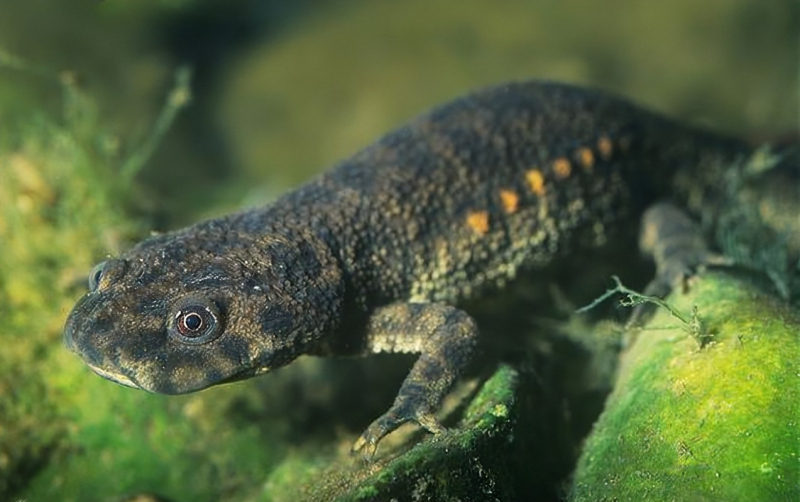
http://www.amphibianfact.com/ 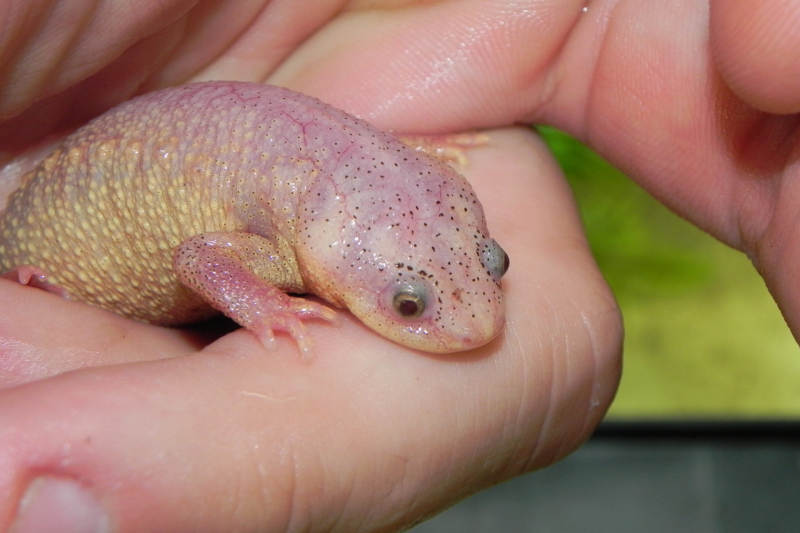
https://snakesatsunset.com -
A few animals have the same abilities as humans, who are known for applying inventiveness to complete tasks. There are many ways to accomplish a task—monkeys utilize tools, coyotes and badgers engage in cooperative hunting, etc. When it comes to defending oneself from predators, African crested rats go above and above by using chemical warfare.
The rodents have been seen gnawing on some trees' deadly bark. They create a nice mouthful of venomous spit and then wipe it on their fur to create a poisonous shield. There are other instances of this behavior in nature. This is the only mammal known to exhibit this behavior; other species of toxic toads obtain their toxins from the insects they consume.
Until one rat was seen eating the bark and smearing the poisons on itself, it was formerly believed that the rats made their own poison. The reason why the rat itself is immune is not fully understood, but when some were kidnapped and kept in cages under continual observation, several of them were seen acting in the same way. It might be because of their four-chambered stomachs' rich bacteria content, but there is no proof of this.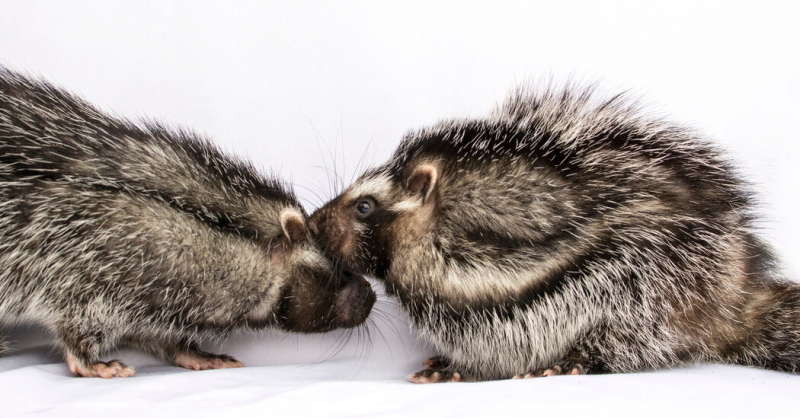
https://www.nytimes.com/ 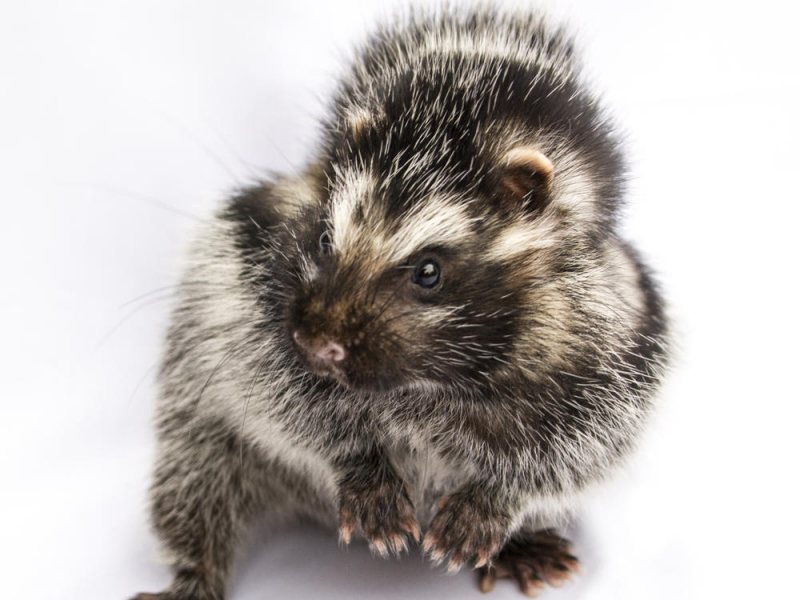
https://www.gpb.org/news/ -
Many people think that vultures are pretty ugly birds because of their bald heads and hooked beaks. Since they eat carrion and are sometimes observed neck-deep in a rotting cadaver, they also seem fairly repulsive in terms of their behaviors. With order to stay cool, they also cover themselves in their own excrement. As their highly acidic pee evaporates, it will lower their body temperature while also eradicating microorganisms. It should come as no surprise that their primary defense strategy is also very nasty.
A vulture will force itself to vomit if it feels threatened. That in and of itself is fairly terrible. However, keep in mind that because they consume already-rotten flesh, when they throw up, it is the most abhorrent scum you can imagine. It will not only smell and look disgusting, but it will also be filled with the bird's highly volatile digestive secretions, which are so toxic they can burn.
This vomit spray is also projectile and has a 10-foot range. And while all of that may make it appear as though these birds are deplorable in every manner, keep in mind that by cleaning up all that carrion, they do an important duty, and if it weren't for them, sickness and bacteria would certainly spread much more widely.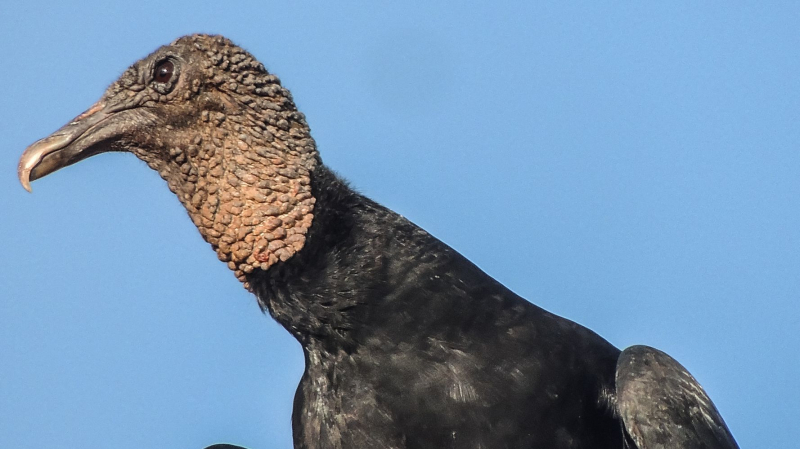
https://www.huffpost.com 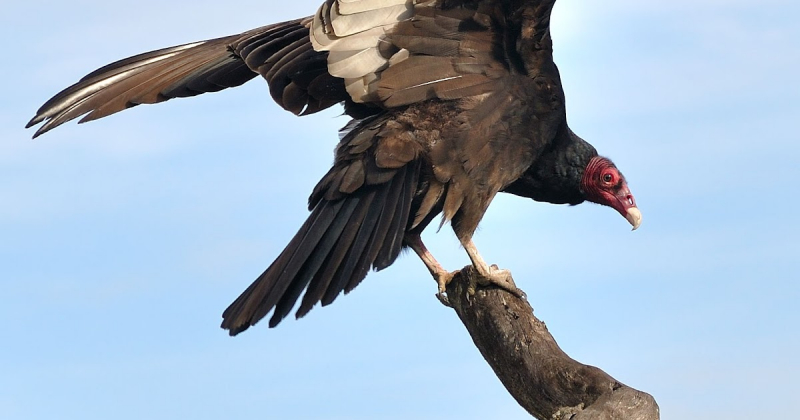
http://www.realmonstrosities.com -
Most people don't need to be informed about how bees defend themselves. The majority of us avoid raiding beehives for honey because we are aware of the dangers of bee stings, which prevent us from acting like bears in the woods. What a bee must do when its sting is insufficient to kill an adversary is less widely known.
Thanks to the internet and its interest with exotic life forms, giant Asian wasps have gained notoriety over the last decade or so. Just a couple of these enormous, scary insects may completely destroy a beehive. Bee stings are actually severed in half by their mandibles, and the wasp's exoskeleton prevents the sting from penetrating the bee. So what happens when wasps assault a hive? They create a scorching sphere of bee power and kill their assailant with it.
The venomous wasps will be attacked by swarms of bees. Even though the wasp will kill a lot of people, the hive might be able to survive since they are all working together to beat their wings and produce heat. A wasp can be killed by them by raising its temperature to as high as 47 degrees Celsius. Amazingly, the bees can control this temperature such that it is hot enough to kill a wasp but not them, as would happen if it were a few degrees warmer.By eliminating drones outside the hive until there are no bees left to protect it, several species of wasps have figured out how to evade these heat balls. To this, however, the bees have also adjusted. Honey bees have been seen accumulating buffalo dung by beekeepers. They do something they would never typically do: they put it around the hive's entrance. Pathogens in dung make it dangerous frequently, and wasps are successfully deterred by it. Wasps take 94% less time to attack a dung-defended hive even when they do attempt to do so.
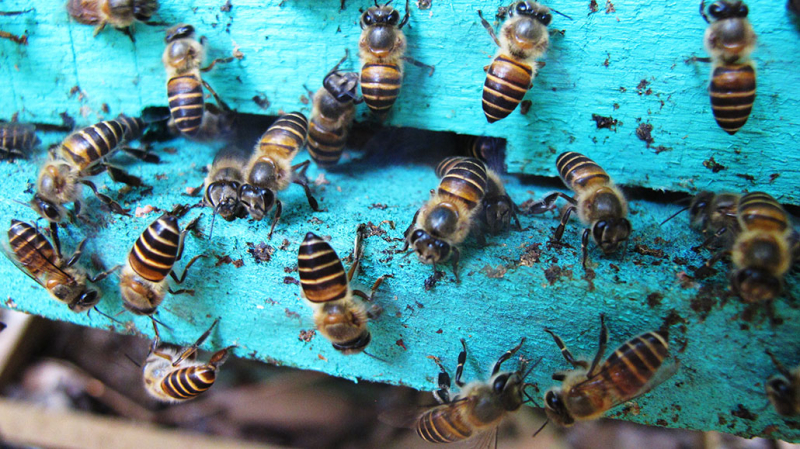
https://www.sciencenewsforstudents.org/ 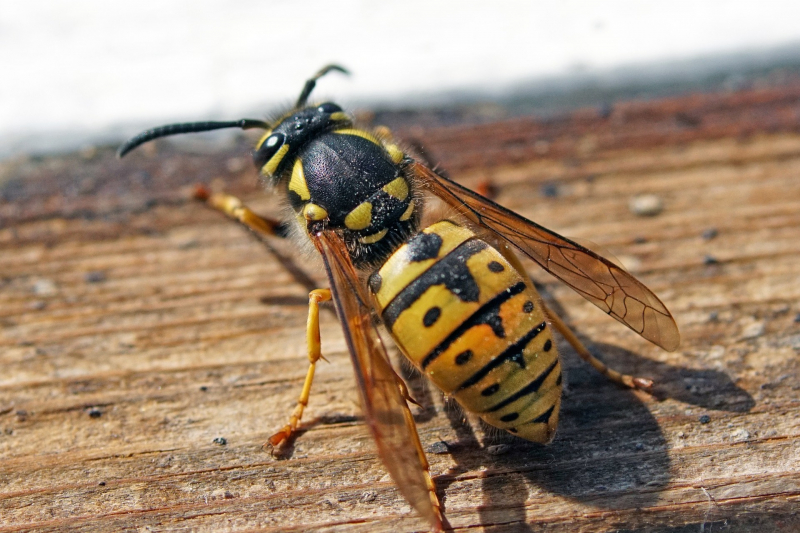
https://www.aaps.org.uk/ -
A brown mass moves slowly among the coral and sands at the ocean's bottom, keeping an eye out for any potential predators despite the fact that it has no eyes. However, the slow sea cucumber has a defense mechanism that costs a lot of energy when problems do arise. This ocean pickle has a fairly nasty way of remaining mostly off the table thanks to a trait specific to its phylum. But on sometimes, you simply need to triumph pyrrhically, as the sea cucumber did in this instance of Life, Death, and Taxonomy.
The best offensive is occasionally the best defense. And the best crime is to be abhorrently repulsive. Here comes the sea cucumber with its gut regurgitation mode of defense, which, if nothing else, traumatizes would-be attackers psychologically.
Sea cucumbers are categorized as echinoderms even though some species do somewhat resemble cucumbers. They are invertebrates, therefore unlike shellfish, worms, jellyfish, and other organisms, they don't have a spinal column. They do, however, possess a digestive system, which they can forcefully eject towards predators in times of threat.
A shark can clean its stomach by spitting it out, then it can re-swallow it, however a sea cucumber cannot do this. Once those intestines are exposed, they remain exposed. The animal can then just produce new ones. Although it takes a few weeks, it is preferable to being devoured.
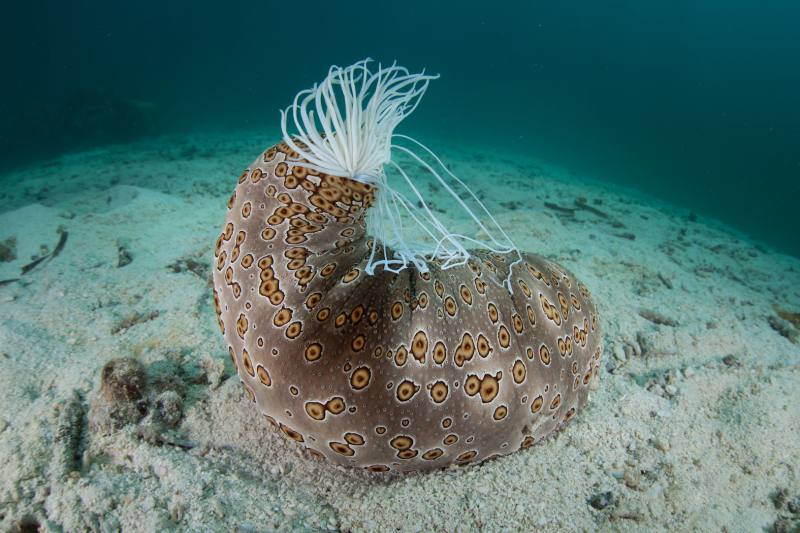
https://www.earth.com Nat Geo WILD channel on Youtube -
Nobody can accurately estimate the number of ants in the globe, and this is for good reason—how could anyone possibly know? Even estimates vary greatly, but some place the number at over 100 trillion. Fire ants sting painfully, while bullet ants are infamous for the paint that comes from their bites. But even among ants, exploding ants take the prize for effective self-defense. These little creatures are really on a whole other level, as their name suggests.
Ants have created a variety of unusual and unpleasant strategies to fend off intruders when defending their colony. However, they are all destroyed by a novel and peculiar species of "exploding ant" (Colobopsis explodens). These tree-dwelling ants engage in territorial battle by latching onto their opponents, splitting open their own bodies, and smearing yellow, toxic gunk all over them in an effort to either kill or at least slow them.
These ants, which are native to Borneo, respond to danger in the most spectacular manner imaginable. The ants, known as Colobopsis explodens, can flex their own bodies so hard that they burst, killing them and covering their attack in a sticky and deadly mixture of internal fluids. The procedure will either render the attacker helpless or fatal.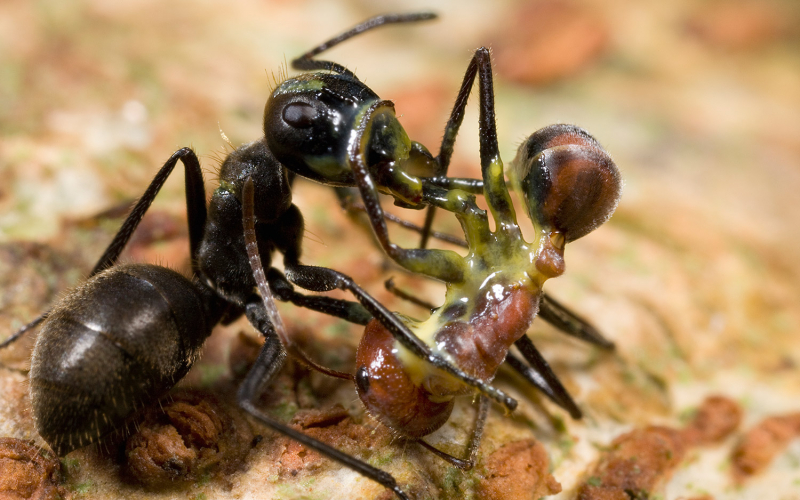
https://www.livescience.com/ 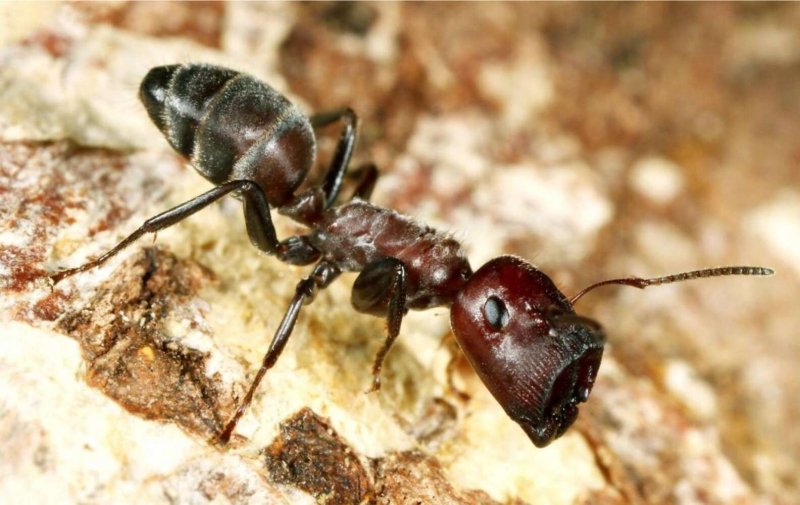
https://www.thedodo.com
















